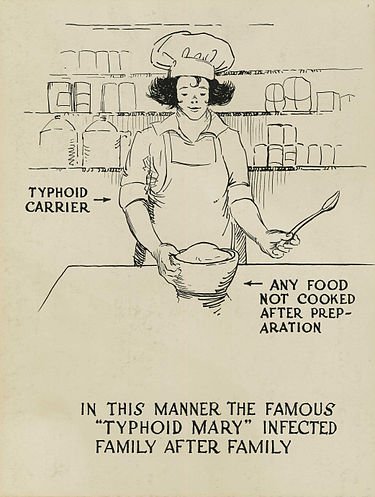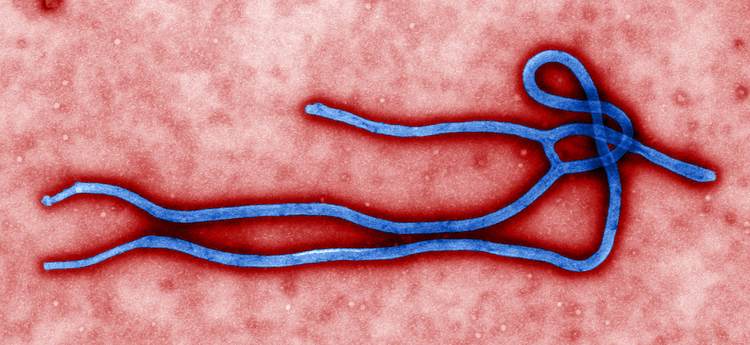

10/12/2014
With the tragic second Ebola case in Dallas, germs are emphatically in the news. Ebola is particularly prominent because it you get it, you’ll die horribly, after costing the taxpayers millions in Ebolacare. (The fact that you’re not hearing more jokes about Ebolacare and headlines calling the president “Barack Hussein Ebola” is because it would be racist. Suggestion: elect a president you’re allowed to to make fun of.)
You all know what germs are, but do you remember where you learned? I learned about germs many years ago, in both in school and at home. There was some kind of Golden Book of the History Of Medicine for children that I read, and it had the history of the Great Men of Medicine.
Hippocrates and Galen, in in ancient Greece, Vesalius who invented anatomy, in spite of medieval objections to dissecting human bodies, Morton and Liston who performed the first operations with ether, Van Leeuwenhoek, the Dutch inventor of the microscope who saw “little animals” crawling about on scrapings from his teeth, Pasteur, who invented microbiology — and Joseph Lister, who invented antiseptic surgery. (These all seem to be white men, so maybe that book isn’t used today).
The Germ Theory of disease is a basic fact of life to you — but it didn’t just happen, someone had to discover it. Occasionally you will hear that whites committed genocide against “Native Americans” by giving them diseases. But in 1492, and for many years after, whites didn’t know much more about germs than the Indians did.
Similarly, we now have immigrants from primitive countries who don’t know that germs exist — and who, when you tell them, don’t believe it.
This is not a new problem. In the middle of the 19th Century, ships bringing the Famine Irish brought cholera with them, because of the crowded ships and the squalor of the receiving slums in America. I wrote about this in 2001 for VDARE.com: I called the article The Camp of Saint Patrick.
A later 19th century immigrant, an Irish woman from County Tyrone named Mary Mallon (1869 — 1938) who worked as a cook, became famous for being a typhoid fever carrier. She was asymptomatic, so she was never sick, but 53 of the people she cooked for got sick, and three of them died. She was confined for a while by the New York public health authorities, released and given a job in a laundry, where she wouldn’t infect people. Apparently she didn’t believe she was infectious, so she started cooking again under a false name.
After that, she was locked up for the rest of her life. She’s known as “Typhoid Mary”.
Mary Beth Keane, author of Fever, a novel about Typhoid Mary, wrote a piece in Time magazine, The History of Quarantine Is the History of Discrimination, [October 6, 2014] retroactively excusing Mallon and condemning the New York Public health authorities, saying they should have “educated” her.
Well, they tried to educate her — but Mallon refused to believe them. And Keane says essentially the same thing about Ebola carrier Thomas Duncan, who lied his way on to the plane from Africa:
“But when one moves the camera back and takes in the culture out of which that lie was born, including but not limited to the widespread denial among West Africans that Ebola is a disease at all (as opposed to a curse), it becomes far more complicated.” [Emphasis added]
Right! This is premodern thinking. Apparently women born in County Tyrone in 1869 couldn’t comprehend the Germ Theory of Disease, and neither could a Liberian — or a lot of current immigrants from primitive countries.
Mary Mallon from County Tyrone was a lot more modern than a Somali Bantu immigrant, who, according to refugee advocates, have never operated a doorknob until they came to America.
A Somali hut — no doorknobs, and not very sanitary.
She was also more modern than an Indian from the Mexican state of Chiapas, who in spite 500 years of Spanish colonialism, still haven’t even learned Spanish, let alone English.
Recently, we’ve seen a lot of diseases coming in from Mexico and Central America with the “minors”
As Ann Coulterwrote recently on the new surge of child migrants
“The Washington Times reported on the Homeland Security Inspector General’s finding[PDF] that detention facilities for illegal border-crossers are teeming with diseases because the guests don’t know how to take medicine or use toilets.
We also get Hmong immigrants, from Vietnam and surrounding areas. The Hmong are, in effect, the wild Indians of Southeast Asia, known to Vietnam veterans as Montagnards, who fought, some of them, with crossbows in Vietnam, and get in trouble over hunting laws in America, leading to one mass murder.
But Hmong medical beliefs are primitive, too — see The Spirit Catches You and You Fall Down: A Hmong Child, Her American Doctors, and the Collision of Two Cultures, about an epileptic Hmong child whose parents insisted she was possessed.
I don’t know if Mary Mallon would have believed that one. But for more on immigrant weird beliefs and the hospitals, seeAmerica’s Health Care System Is “Possessed” — By Mass Third-World Immigration.
Disease can come in on Mexican produce, without any immigrants at all, because of the lower standards of Mexican public health. TV Doctor Dean Edell wrote in a 1999 book that
One reason you are getting these stomach bugs is that increasing quantities of our food come from foreign countries, where agriculture and foodhandllng standards are different. Call it the revenge of the global economy.Eat, Drink, And Be Merry[Emphasis added]
Of course, many of America’s food handling chores are now being done by people from these same foreign countries, so it now affects the American food industry.
Third World immigrants not only don’t understand the germ theory of disease, they may refuse to believe it even if we teach it to them.
This is something we reported on in 2007, after a listeriosis outbreak
Knowledge, Attitudes, and Practices among Immigrant Hispanic Women Regarding Consumption of High-Risk FoodsHispanic/Latino immigrants are at high risk for listeriosis, a disease that can cause severe pregnancy complications, including miscarriage, stillbirth, uterine infection, premature labor, and death in the newborn period.
The goal of CDC’s Futura Mama program is to assess community attitudes and knowledge about unpasteurized milk products (a common vehicle for listeriosis) and use this information to develop culturally sensitive disease prevention strategies.
Eight focus groups were conducted in a Hispanic/Latino immigrant community in Georgia. Most participants reported regular consumption of homemade cheese and thought that unpasteurized milk and milk products are healthier and tastier than store-bought products.
None of the participants were aware of listeriosis, of other infections related to unpasteurized milk products, or of the association between infection and pregnancy complications.
Women <32 years of age were more likely than those >32 years to accept the idea that health risks are associated with unpasteurized milk products. The study concluded that public health messages delivered through in-person formats (workshops and discussion groups) and mass media may be effective in reducing the risk of listeriosis in Hispanic/Latino communities.[Emphasis added]
Centers for Disease Control, Immigrant and Border Infectious Disease Concerns for Women, November 2004
The Listeria germ is named after Sir Joseph Lister [1827 –1912] whom I read about in school. His pioneering work in sterile surgery was done between 1893 and 1897.
But word doesn’t seem to have reached rural Mexico, and now we have women in California making cheese literally in their bathtubs with no idea of what “insanitary” means. (See also Brenda Walker’s Mexico’s Bathtub Cheese Spreads Tuberculosis in America.)
Tyler Cowen, the Open Borders economist, said on his blog Marginal Revolution that “Even a completed fence would not stop a virus…” [April 25, 2009]
In fact, diseases require vectors–the swine flu viruses were not hiking through the Sonoran Desert, wearing little tiny backpacks, carrying little tiny waterbottles, and singing Mexicanos, al grito de guerra in little tiny voices that you can’t hear because they're only 200 nanometers tall.
The viruses come in with people — and an unguarded border that lets millions enter without inspection every year isn’t helping.
What else isn’t helping is our refugee policy, which brings in people from premodern places like Liberia,
In a story about the cleanup of the apartment of Thomas Duncan, this sentence appears (hat tip, American Renaissance):
The four family members who are living there are among a handful who have been directed by the authorities to remain in isolation, following what officials said was a failure to comply with an order to stay home … [Delay In Dallas Ebola Cleanup As Workers Balk At Task, By Kevin Sack And Manny Fernandez, October 2, 2014]
Well, of course they failed to comply. They don’t know why it would be wrong.
But the real problem is that they’re in America at all — because America’s lawmakers have no more concept of “keeping out people from primitive societies” then the primitive societies do of germs. They believe that diversity in immigration is an unmixed good.
And that’s almost as superstitious as the belief that Ebola is caused by a curse.
This is a content archive of VDARE.com, which Letitia James forced off of the Internet using lawfare.